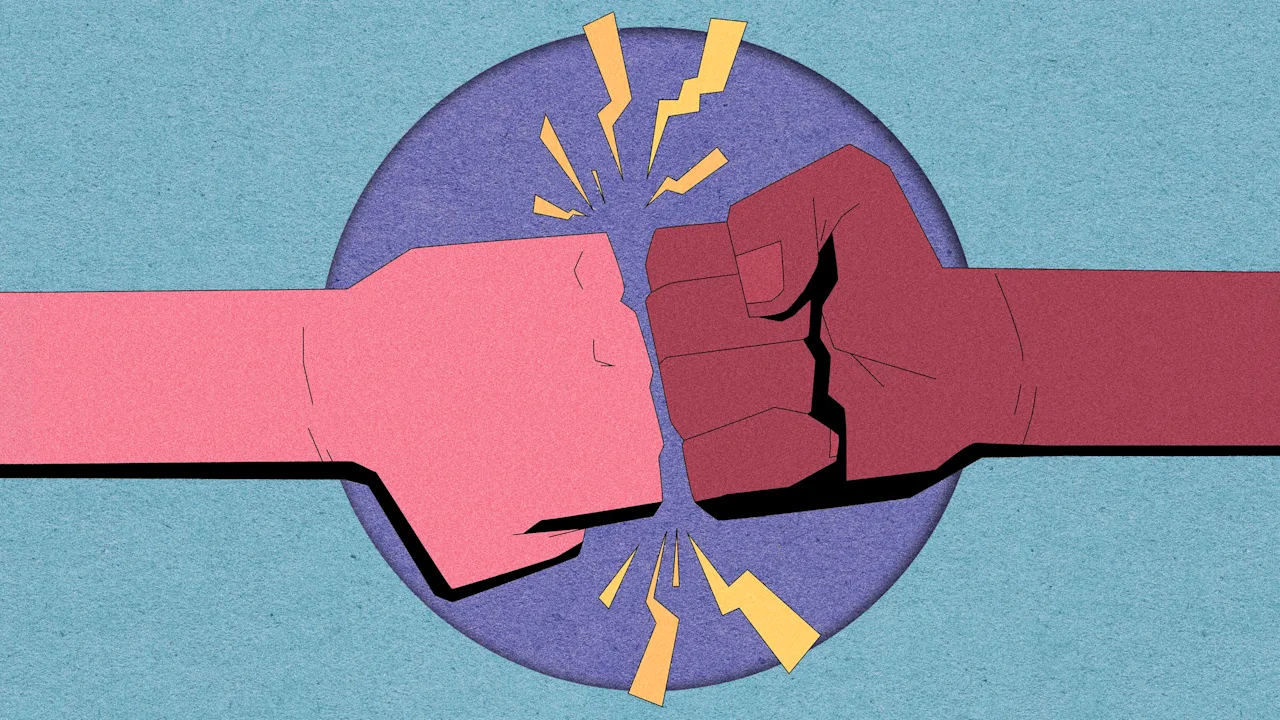
Most commercial tips tell you to avoid making enemies. I am here to tell you the opposite: if your brand does not not in the enemy, you are doing it wrong.
This does not suggest that you need to create conflicts for the good of conflicts. But there is power in the opposition. When you stop so clearly for something that you inevitably face something else, you create clarity. And in this very crowded market, that clarity is not only useful, it is essential for survival.
THE PROBLEM OF PLAYING IN THE SAFE
When brands try a universal attraction, they generally achieve a universal mediocrity. People think you are “good.” The fine pays the invoices, but does not create category leaders.
The numbers demonstrate it: distinctive brands see a 62% higher ROI than campaigns that lack a distinctive nature. That is not a small difference between being remembered and being forgotten. The distinctive brands put a participation in the ground and say: “For whom we are”, either through images, tone or messages. The brands that pursue the universal attraction generally sand the edges and end up forgettable.
The companies that are going through today are not the ones that avoid the conflict. They are the ones that are brave enough to choose one side and fight for it.
Why your enemy is not your competition
The competition is tactical. It is market share, characteristics and prices. Your enemy is philosophical. It is a way of thinking, a set of values or a specific worldview that its brand exists to challenge. Think about giving your business an enemy in this way:
- Bigger than a competitor: Your enemy transcends individual companies.
- Ideological: React a philosophy or approach that you oppose.
- Galvanizing: He gives his audience something to meet.
- Clarifying: It forces you to define what it really represents.
The psychology of taking sides
As humans, it is natural for us to choose teams and continue with our tribe. Our brand options become part of our identity, from the coffee we drink to the phones we carry. It is those brands that establish the clear psychology of the United States. They make customers feel “catch me.” This creates tribal loyalty in which the brand becomes part of the personality of some, and will defend it at any cost. Here are some examples of how some of the most memorable brands broke into an enemy:
Apple vs. Ordinary Apple positioned itself as the final creative company, calling competitors “Orwellian” in their 1984 and “boring” campaign in Mac vs. ads. PC. He established his core as the creative side of humanity and never hesitated. Of course, it is now 1,000 times larger, but its commitment to oppose “ordinary” remains unchanged.
Southwest Airlines versus complexity The enemy of Southwest was the complexity of the airlines. Buy a rate, take a seat and bring your suitcases. Without additional charges, without caste system with 11 shipping groups, there is no material fault due to their life options if it was not in the top five. The strangers called this process a “call of cattle”, but Southwest gave a deaf ear to the noise, and its nucleus continued to grow.
However, Southwest recently announced that he is adopting traditional airline practices in 2025–26, abandoning his differentiating enemy. We will see how loyal ones respond now that there is nothing separated from the southwest of its competitors.
Creating your enemy
Ready to find the natural opponent of your company? Here we show you how to do it strategically:
Step 1: Identify your natural opposition
What way of thinking or doing business do your company naturally withdraw? What frustrates its founders and leaders about the industry? What cultural perspective seems crazy about?
Step 2: Articulate the bets
Why does this opposition matter? What is at risk if the “enemy” worldview earns? In your Mac vs. ads. PC, Apple positioned the competition as out of contact and non -inventive, letting bets clarify when issuing to ITELF as the creative exit for the future.
Step 3: Gather your nucleus
Communicate your position in a way that makes your ideal customer feel so much and understood. They should think: “Finally, someone understands.” The Tillamook dairy brand recovered its nucleus by relying on the quality on the scale, loading without apologies for real ingredients and a focus on small lots, even when it meant losing prices sensitive buyers.
Step 4: Accept compensation
Not everyone will like it. That is the point. Oatly left the door directly challenging the great dairy products with their “such as milk, but made for humans”, the acceptance of the position that it would alienate the traditionalists to build a cult among the loyal ones based on plants.
Why this works now more than ever
Differentiation is survival. People overlap with options and more and more loyal to companies that feel authentic and determined. Having a clear enemy provides both.
Your enemy is not trying to destroy you. Instead, he is saving you from irrelevance. Without something to defend yourself, there is no reason for anyone to be with you.
Remember: you will never win without your enemy. Your enemy always wins without you.


